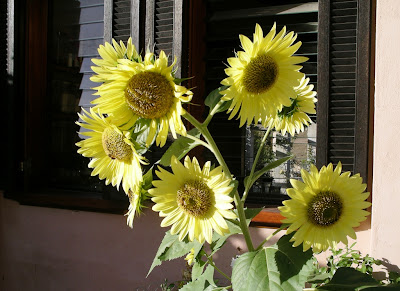Box, or
Buxus, is one of the most useful plants for hedging. It has been used for at least two thousand years and one reason is that rabbits, deer, sheep and cattle won't eat it . Kangaroos and wallabies will also ignore it. Magic. So we spent Australia Day propagating them from cutting. We aim to produce a thousand new plants each year. We do love Skippy but we also love gardens. This way we can have both.
There are many varieties of Buxus. In Australia the most commonly planted varieties are Japanese Box, Buxus microphylla and English Box, Buxus sempervirens. Of these two, English Box is far superior, requiring much less water. Unfortunately many Australians seem to prefer to Japanese Box presumably because it is grows more quickly and Australian like quick results. But in my opinion this is crap thinking. Not only does Buxus microphylla require more water, but it will rapidly look very dodgy unless pruned frequently. Buxus sempervirens is slower growing and will look just fine with only one or two prunings a year. The dwarf form of this, Buxus sempervirens suffriticosa, is best suited to hedges or topiary which need to be be kept very small and very neat.
Another variety, much less common, but worth using is the Balearic Box, Buxus balearica, native to the beautiful islands of Ibiza, Minorca and Majorca. As can be seen in the photograph, it has larger leaves than other Box varieties. It is incredibly tough, grows into a tallish tree and handles pruning well so is suited to hedging and topiary. We have propagated fifty of these as an experiment. They will be planted out into The Horse Paddock as part of our collection of Buxus varieties.





































